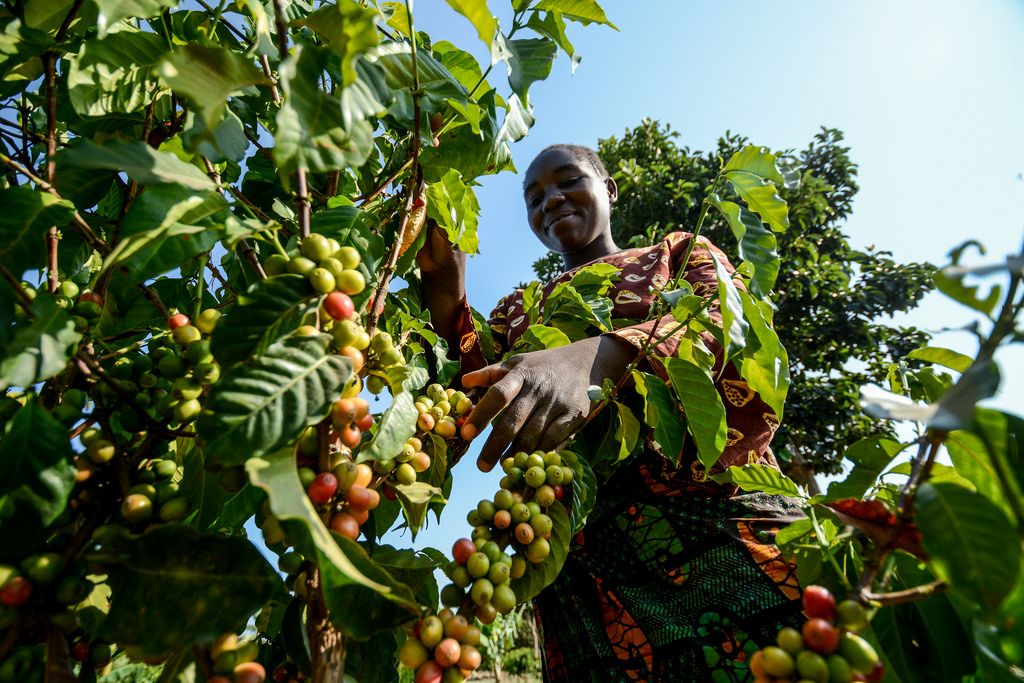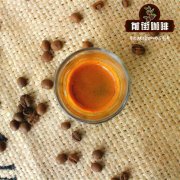Different African Coffee: coffee Field in Tanzania-Kilimanjaro Mountain

Professional coffee knowledge exchange more coffee bean information please follow the coffee workshop (Wechat official account cafe_style)
This article introduces the first-class spring of African coffee: Tanzania.
Tanzania is a typical East African country, with Kenya and Uganda to the north, Malawi, Mozambique and Zambia to the south, and Rwanda and Burundi to the west. When it comes to Tanzanian coffee, we must mention the coffee produced in the Kilimanjaro area. Located in northeastern Tanzania, it is the highest mountain in Africa. As early as 1893, missionaries introduced bourbon coffee for planting. Extreme and unique climatic conditions are the treasure of growing coffee. Today, the coffee produced in Mount Kilimanjaro is definitely the best representative of Tanzania and accounts for 75% of Tanzania's coffee production.
You may ask, what are the advantages or specialties of the growth conditions of Kilimanjaro Mountain Coffee? This is because Mount Kilimanjaro is not only the highest mountain in Africa, but also a mountain formed after a volcanic eruption, making it the second largest crater in the world. Friends who have read the Coffee Roasters Asia blog or have done a lot of research on coffee should know that volcanic ash soil is an excellent nourishment for coffee beans. On the other hand, the volcanic soil of the Kilimanjaro mountain is fertile, weakly acidic and well drained, and the combination of climate and geology makes the coffee flavor rich.

In addition, Africa always gives the impression that the temperature is hot and the humidity is dry all the year round. This is really a big misunderstanding. Take Mount Kilimanjaro as an example. Although the temperature in the mountain can be as high as 59 degrees Celsius, the peak can be covered with snow all the year round, up to minus 34 degrees Celsius, so Mount Kilimanjaro is also known as the "equatorial snow peak." In terms of rainfall, the annual precipitation in the river valley can reach 800mm to 900mm; the mountains are cool and rainy, with an annual rainfall of 1600 to 1800 mm on the windward slope. Growing in the climatic and geographical environment provided by this "equatorial snow peak", one or two can guess how the flavor of coffee is particularly.
Round beans (Peaberry) vs flat beans
Tanzania's round beans are definitely the icing on the cake for coffee produced in Tanzania. People may ask: what is a round bean? What are flat beans? Isn't a coffee bean just a bean? Is there a difference between roundness and evenness? Here, it may be necessary to add some information in this respect.
First of all, the real body of coffee beans is the drupe of coffee cherries, which is a kind of seed and plant. Under normal circumstances, in a coffee berry, there will be half-divided flat bean coffee seeds. This is what we call coffee beans, the scientific name is flat beans (Flat beans).
The round bean (Peaberries) is actually a variety of coffee beans. The scientific name, also known as "caracol", "caracolillo", belongs to Spanish, which means little snail. Botanically, there are two possible reasons for the emergence of round beans: 1. Uneven pollination, 2. Nutrition is uneven in the process of growth. Rather than split into two seeds in half, the seed inside the plant does not split, so it presents a complete oval grain of an round bean. Is this common? Generally speaking, the yield of round beans is about 50% of that of flat beans. Round beans are also found in other coffee-producing countries in Africa, such as Kenya. But in the case of Tanzania, only about 5% to 10% of the fruits in local coffee production are in the shape of round beans. And the size of round beans is less than flat beans, in the process of treatment will also be screened by the net, separated from flat beans will be singled out for sale. Compared with flat beans, round beans are very rare and precious.
In terms of taste, the flavor of round beans is better, or that of flat beans is better? As a matter of fact, there is no conclusion on this, and many people are still discussing this issue. It is true that the emergence of round beans is a defect in the growth of coffee cherries, but some people think that it is reasonable that all nutrients are stored in smaller round beans, which concentrate more nutrients than ordinary flat beans, and have a more prominent flavor, sweeter and richer flavor.
In fact, compared with other Asian countries such as Japan and South Korea, it seems that there is little choice of Tanzanian coffee in the boutique coffee market in Hong Kong. With regard to African coffee, people may always drink one or two cups of Kenya or Ethiopia, but the coffee friends around them do not know much about Tanzanian coffee and are even surprised that she produces coffee. If Ethiopian coffee smells amazing and Kenya coffee is famous for its acidity, how would you describe Tanzanian coffee?
In the case of the Kilimanjaro round beans recently brought by Coffee Roasters Asia, it is true that compared with Kenyan or Ethiopian beans, this coffee is neither as sour as Kenya nor as fragrant as Ethiopia. However, her soft and gentle acidity is as sweet and elegant as red wine. If it is roasted in a medium and light degree, its refreshing and smooth acid, orange fruit aroma, and sweet mixed with guava and sucrose, the flavor will change slightly with the change of temperature, so it is a kind of coffee with great character. If baked deeply, there will be an extra round layer: the sweetness of figs, the sweet and steady taste of caramel, and the high cleanliness will enhance the overall flavor of the coffee.
Important Notice :
前街咖啡 FrontStreet Coffee has moved to new addredd:
FrontStreet Coffee Address: 315,Donghua East Road,GuangZhou
Tel:020 38364473
- Prev

How to judge whether espresso is good or bad? What is espresso? Starbucks espresso
Professional coffee knowledge exchange more coffee bean information please follow the coffee workshop (Wechat official account cafe_style) Starbucks coffee is a familiar representative of espresso (or fancy coffee), but can it really represent espresso? Can it be said that the more expensive the coffee, the better the quality? where is the standard for a good cup of espresso? In fact, espresso is not just for everyone.
- Next

What's the difference between espresso and espresso? Hand-brewed coffee. American? What is Italian coffee?
Professional coffee knowledge exchange More coffee bean information Please pay attention to coffee workshop (Weixin Official Accounts cafe_style) Now popular hand-brewed coffee, compared with the familiar Italian coffee, what is the difference between these two forms of coffee? For many coffee drinkers, the distinction between the two is a bit unclear. A. Coffee beans A. Hand brewed coffee: usually single coffee beans
Related
- Beginners will see the "Coffee pull flower" guide!
- What is the difference between ice blog purified milk and ordinary milk coffee?
- Why is the Philippines the largest producer of crops in Liberia?
- For coffee extraction, should the fine powder be retained?
- How does extracted espresso fill pressed powder? How much strength does it take to press the powder?
- How to make jasmine cold extract coffee? Is the jasmine + latte good?
- Will this little toy really make the coffee taste better? How does Lily Drip affect coffee extraction?
- Will the action of slapping the filter cup also affect coffee extraction?
- What's the difference between powder-to-water ratio and powder-to-liquid ratio?
- What is the Ethiopian local species? What does it have to do with Heirloom native species?

